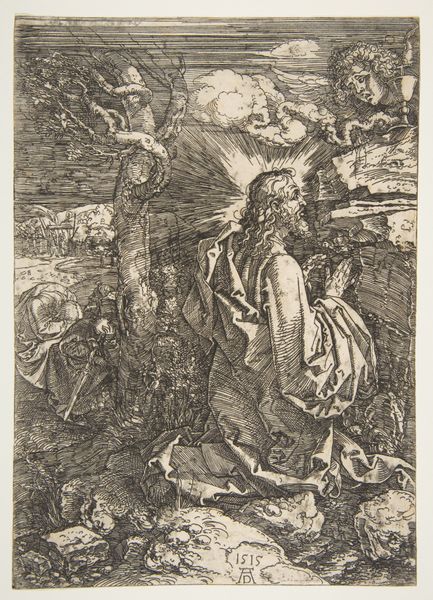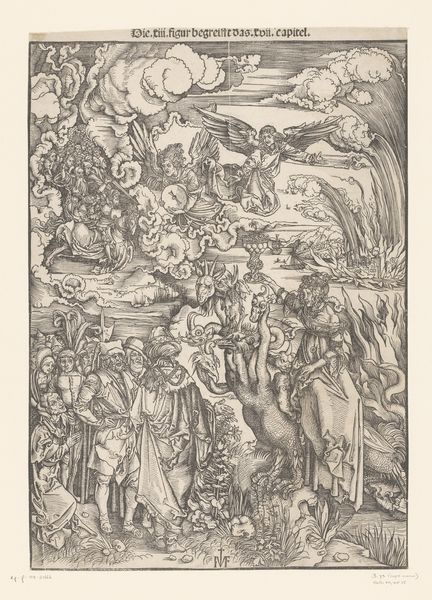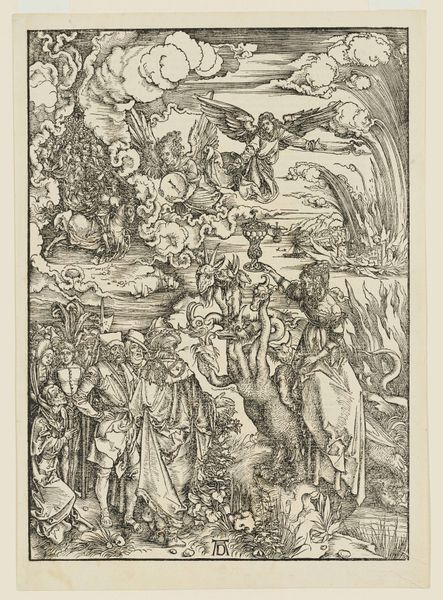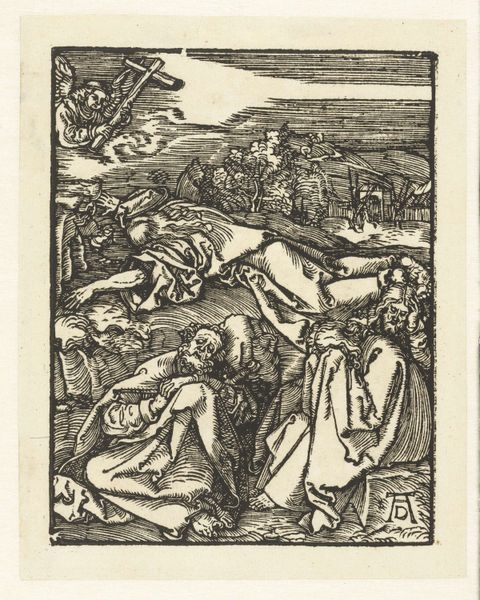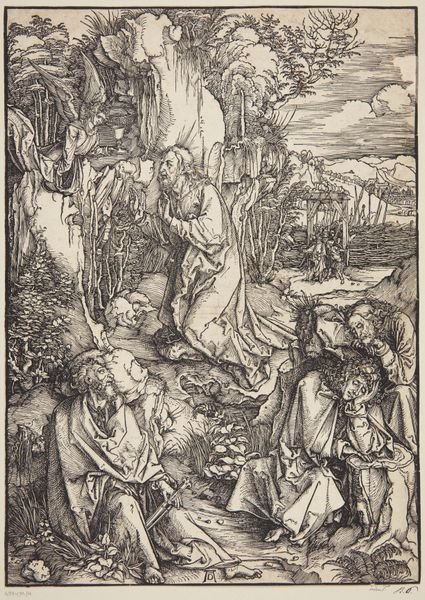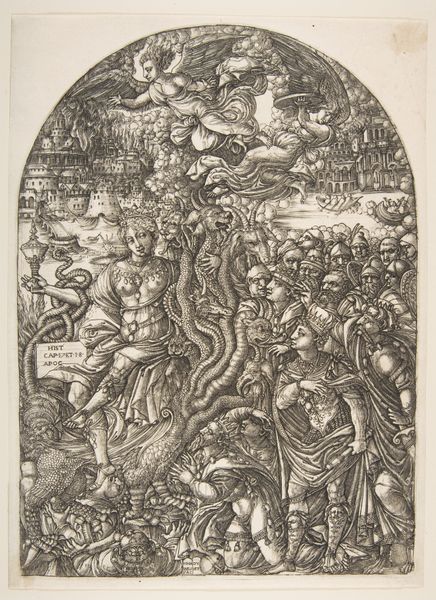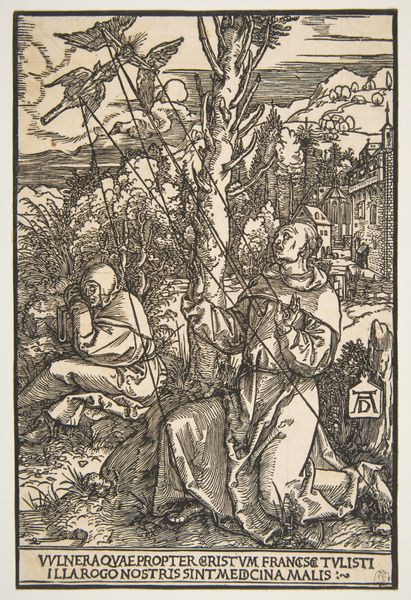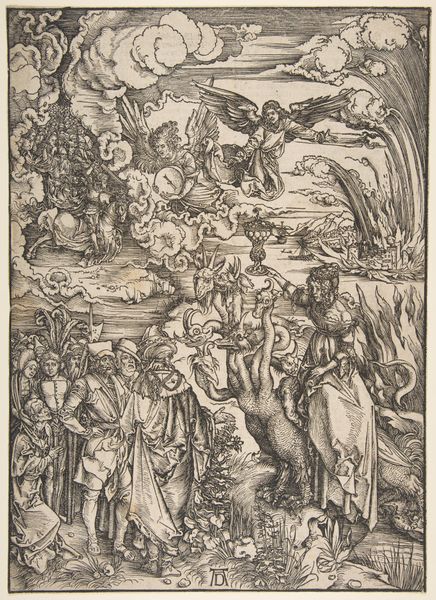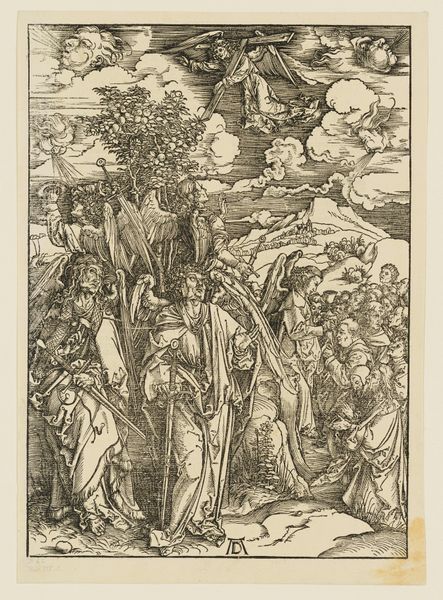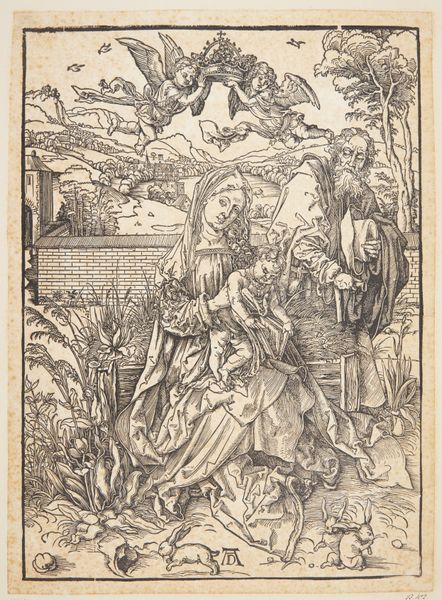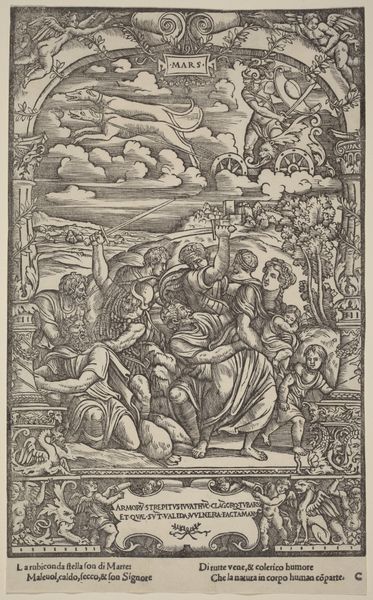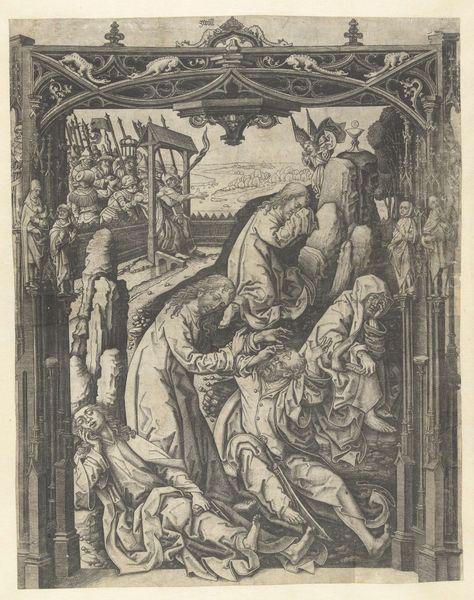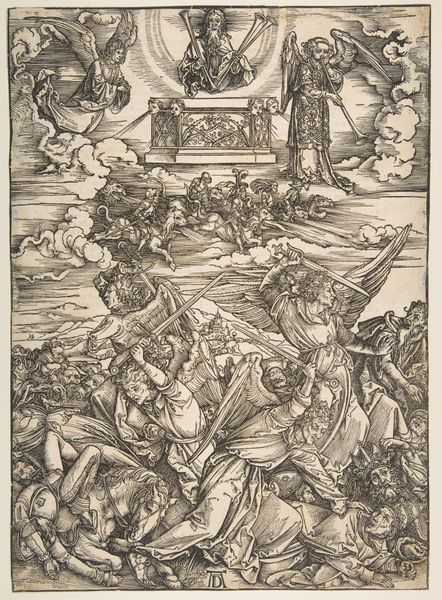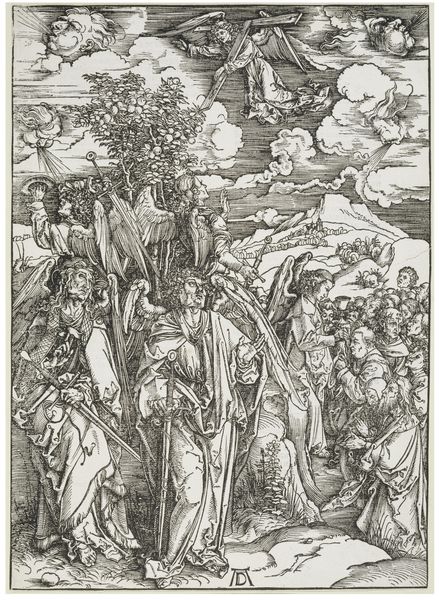
The Seven Angels with the Trumpets, from "The Apocalypse", Latin Edition 1511
0:00
0:00
drawing, print, ink, woodcut
#
drawing
#
ink drawing
#
medieval
#
pen drawing
# print
#
human-figures
#
bird
#
figuration
#
ink
#
woodcut
#
northern-renaissance
Dimensions: sheet: 15 5/16 x 11 1/16 in. (38.9 x 28.1 cm)
Copyright: Public Domain
Curator: The density of line is overwhelming. At first glance, it’s a maelstrom—I see chaos and devastation, biblical in scale. Is this how anxiety manifests on paper? Editor: This is Albrecht Dürer’s woodcut, "The Seven Angels with the Trumpets," created in 1511. Part of his Apocalypse series, it depicts a scene from the Book of Revelation, specifically when the first four angels sound their trumpets, unleashing plagues upon the earth. Curator: Plagues! I knew it. There's fire, something resembling hail, and boats capsizing—pure panic. Dürer’s detail is so meticulous; even the clouds look angry. Does the art style belong to the Northern Renaissance? Editor: Precisely, and we must consider the socio-political climate of the time. The early 16th century was marked by immense religious and social upheaval—the Reformation was brewing. Dürer, though religious, sympathized with some of the criticisms of the Catholic Church. These woodcuts weren’t merely illustrations; they were powerful statements. Curator: So, these weren't just "pictures from a book." There's definitely a simmering rebellion here. What do you see as the most emotionally charged aspect? For me, it's that tiny boat getting tossed around like a cork, that shows complete lack of control in front of something beyond comprehension. Editor: The destruction visited on the environment. Reading it from our contemporary viewpoint, Dürer inadvertently gives us an early image of environmental collapse. War, famine, plague: the end of days. This artwork captures this end by weaponizing elemental forces, setting ablaze ecological and political systems. Curator: Oh wow, I hadn't considered its modern parallel, but I see what you mean. There is always something familiar within our past that touches on present day anxieties. It’s not just a doomsday scenario, it’s our possible future. Editor: Exactly, art provides this incredible meeting place between art history and contemporary events to help us critically understand who we are and the multiple possibilities of what may come. Curator: I guess contemplating the apocalypse does give you a fresh perspective on a Tuesday afternoon! It shows the end isn’t necessarily "the end," rather a process through which new realities take shape.
Comments
No comments
Be the first to comment and join the conversation on the ultimate creative platform.
